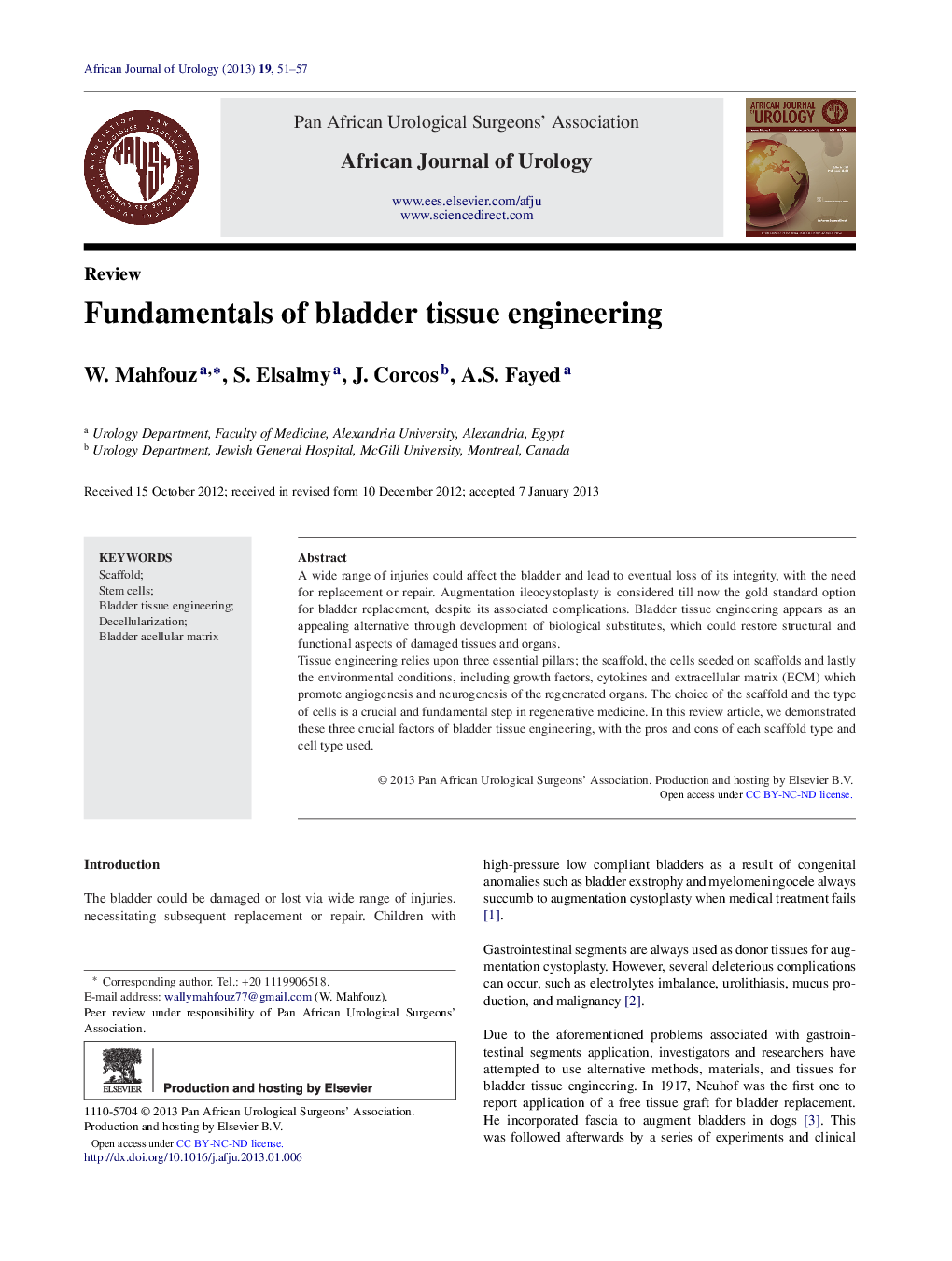| Article ID | Journal | Published Year | Pages | File Type |
|---|---|---|---|---|
| 4267712 | African Journal of Urology | 2013 | 7 Pages |
A wide range of injuries could affect the bladder and lead to eventual loss of its integrity, with the need for replacement or repair. Augmentation ileocystoplasty is considered till now the gold standard option for bladder replacement, despite its associated complications. Bladder tissue engineering appears as an appealing alternative through development of biological substitutes, which could restore structural and functional aspects of damaged tissues and organs.Tissue engineering relies upon three essential pillars; the scaffold, the cells seeded on scaffolds and lastly the environmental conditions, including growth factors, cytokines and extracellular matrix (ECM) which promote angiogenesis and neurogenesis of the regenerated organs. The choice of the scaffold and the type of cells is a crucial and fundamental step in regenerative medicine. In this review article, we demonstrated these three crucial factors of bladder tissue engineering, with the pros and cons of each scaffold type and cell type used.
